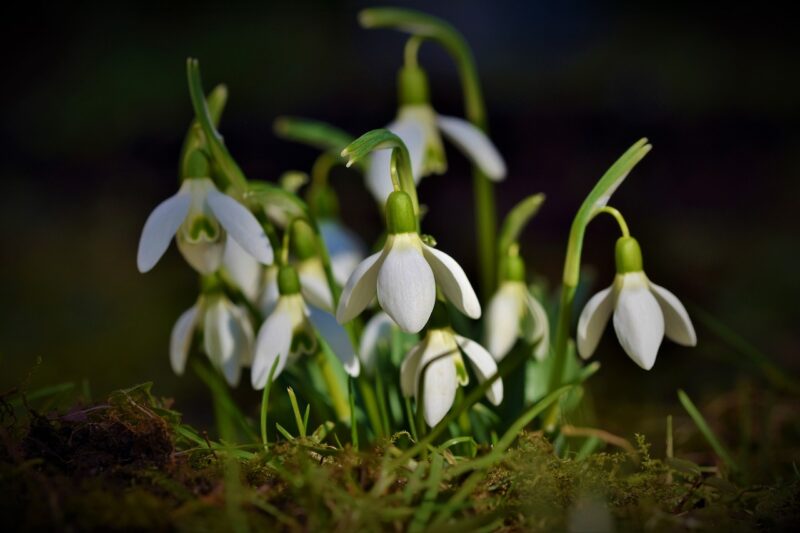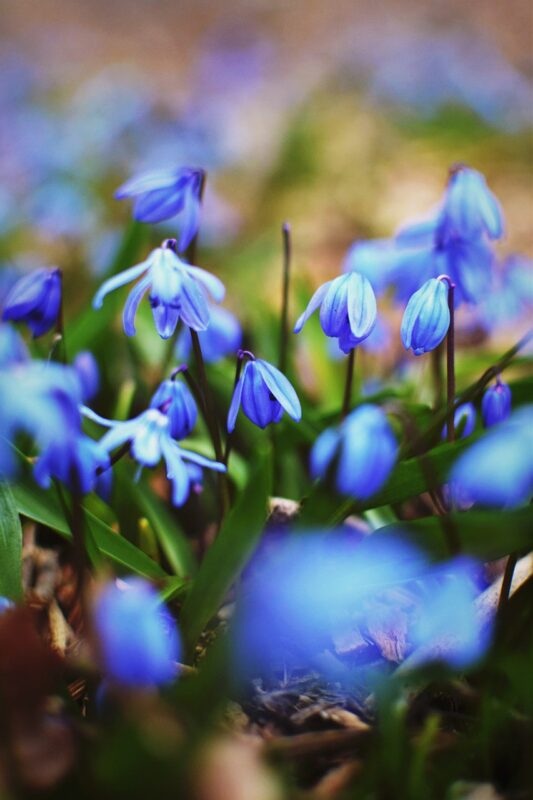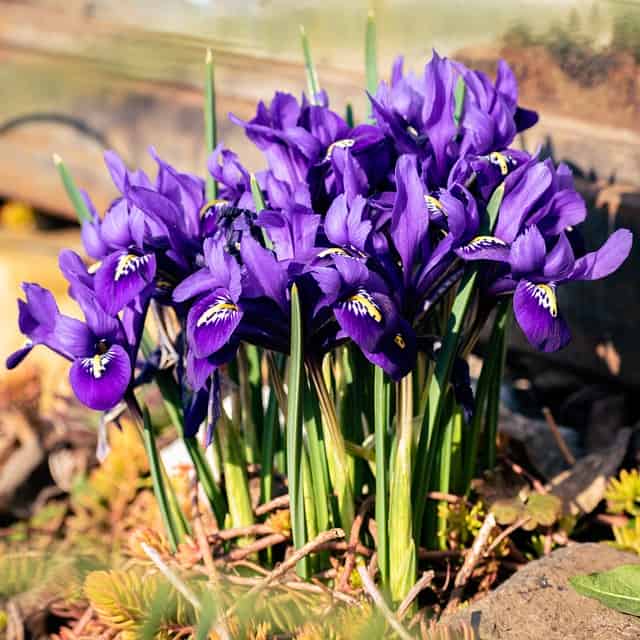Deer can be a significant challenge for gardeners, particularly in areas where populations are high. These foragers are notoriously known for munching on a wide variety of plants, including many beautiful spring flowers. However, certain spring bulbs have natural deterrents that make them less appealing to deer.
This guide explores some of the most effective deer-resistant spring bulbs, aiding both avid gardeners and casual enthusiasts in their quest for a beautiful and resilient garden.
Hyacinth (Hyacinthus orientalis)

Hyacinths are one of the most fragrant and vibrant spring bulbs, loved for their striking blooms and robust aroma. While their beauty makes them a popular choice for any garden design, they are known to be unpalatable to deer due to their strong scent and bitter taste. The essential oils in hyacinth bulbs and flowers create an unpleasant experience for deer, effectively deterring them from indulging.
Hyacinths bloom in early spring and come in a multitude of colors including blue, pink, purple, yellow, and white. When planting, consider their need for well-drained soil and full sunlight to promote vigorous growth. They thrive in Zone 3-9 and require a cold period to bloom, making them ideal for temperate regions. Additionally, incorporating hyacinths into your landscape not only grants the visual pleasure of blooming but also the intoxicating fragrance that can enhance the overall garden experience.
Daffodils (Narcissus spp.)

Daffodils are widely recognized as one of the top deer-resistant bulbs available, often regarded as a staple in gardens across various climates. Their toxicity is attributed to the alkaloids present in the bulbs, which deter deer as well as many other pests. The bright yellow, white, and orange blooms signal the arrival of spring, bringing cheerful color to gardens, borders, and naturalized areas.
Planting daffodils is simple, as they adapt well to diverse soil types and conditions. They thrive best in full sun to partial shade and can grow in Zones 3-8. After blooming, lethargy sets in for the foliage, which must remain intact for several weeks to ensure energy is transferred back to the bulb for next year’s growth. The fact that they multiply over time means that daffodils can create beautiful, naturalized drifts—adding to your landscape’s charm while keeping deer at bay.
Snowdrops (Galanthus nivalis)

Snowdrops are some of the first flowers to bloom in late winter or early spring, often pushing through the snow to announce the end of winter. Their delicate white flowers make them a classic addition to the garden, but their low deer appeal is a bonus for concerned gardeners. Snowdrops, like daffodils, contain toxic compounds that discourage deer from grazing.
These bulbs are hardy and adaptable, flourishing in Zones 3-7. Snowdrops prefer moist, well-drained soil and partial to full shade, making them perfect for woodland gardens or naturalized areas. They are also notable for their ability to spread quickly, creating lovely, snow-white blankets across shaded areas. As a gardener, planting snowdrops adds not just an early splash of life but also tranquility and refinement to your landscape.
Glory-of-the-Snow (Chionodoxa spp.)

As its name suggests, Glory-of-the-Snow provides stunning color and cheerful blooms very early in the spring season, often blooming through the snow. These small, star-shaped flowers typically feature shades of blue, pink, or white and are unique for their wider spreading nature compared to other bulbs. Their composition contains elements that make them less favored by deer, thus offering another option for those in deer-prone areas.
Glory-of-the-Snow bulbs thrive in Zones 3-8 and are best planted in well-draining soil with full sun or partial shade exposure. They are perfect for rock gardens, borders, or naturalizing under trees. The combination of their vibrant colors and resilience against deer makes them an excellent choice for gardeners looking to brighten their spring landscape without inviting hungry wildlife.
Crocus (Crocus spp.)

Crocus flowers, with their vibrant, sometimes striped petals, are heralds of spring. Their early blooming, often a sign that the harsh winter is behind us, is paired with the good news that deer tend to avoid them. The diverse range of colors—purple, yellow, white, and lavender—adds a lovely palette to any garden.
Planting crocus bulbs is ideally done in the fall, where they can establish their roots in cooler soil conditions before winter arrives. They thrive in Zones 3-8 and prefer well-drained soil with good sunlight. Additionally, crocuses exhibit a tendency to naturalize effectively, ideal for a relaxed garden style that blends beauty with resilience. With their deer-defying characteristics, they serve as an excellent foundation for any spring garden.
Siberian Squill (Scilla siberica)

The Siberian squill is a charming little bulb with distinctive blue flowers that carpet the ground in early spring. This robust bulb is noted for its deer resistance, attributed to both its toxicity and its low palatability. The clusters of star-shaped blooms can create breathtaking blue swaths in gardens and meadows, providing a unique aesthetic against the early spring backdrop.
Siberian squill thrives best in Zones 3-8, preferring rich, well-draining soil and full sun to partial shade. They are resilient and can naturalize into drifts over time, providing a reliable spring show that requires little maintenance. Their inclination to bloom abundantly while also thwarting deer make them a gardener’s delight when designing spaces with flowers that can withstand wildlife pressures.
Grape Hyacinth (Muscari armeniacum)

Muscari, commonly known as Grape Hyacinth, are delightful spring bulbs with dense clusters of small, bell-shaped flowers that resemble grapes—a true delight for the senses. Their appealing fragrance and vibrant blue coloration make them a standout choice, but they also possess qualities that deter deer due to their bitter taste.
Grape Hyacinths are exemplary for gardeners searching for low-maintenance, hardy bulbs. They thrive in Zones 3-9 and prefer well-drained, fertile soil and full sun to partial shade. These bulbs can multiply rapidly, creating lovely clumps over years with minimal effort. For those looking to add a bit of whimsy and color to their gardens without worrying about deer, Muscari provides a beautiful and inviting option.
Allium (Allium spp.)

Allium, a member of the onion family, not only offers bold, explosive blooms but also works effectively as a deterrent against deer. The onion-like flavor and aroma of the plants make them largely unappealing to deer and many garden pests. Their globe-like flower heads, composed of numerous small blossoms, create stunning visual impacts in any garden setting.
These versatile bulbs thrive in Zones 3-10 and prefer well-drained soil with full sunshine. Alliums bloom at various points in spring and summer, thus enabling staggered beauty throughout the growing season. Their ability to grow in a variety of settings—from perennial beds to containers—makes them a versatile choice for gardeners. With their striking presence and deer-repelling attributes, Alliums stand out as essential spring bulbs.
Fritillaria (Fritillaria imperialis)

The Fritillaria family is known for its regal beauty, with Fritillaria imperialis, commonly called Crown Imperial, leading the pack. This distinctive bulb features large, pendulous flowers that resemble bells and sits atop a spiky, leafy stem. Interestingly, the strong odour produced by the bulbs is often off-putting to deer, who tend to stay clear of this dramatic plant.
Crown Imperial thrives in Zones 5-9, favoring well-drained soil and full sun. These impressive plants can grow quite tall, adding an architectural element to gardens. When planting Fritillaria, it’s important to consider their space needs, as they are best placed where their unique form can shine. Their innate deer resistance and striking blooms will ensure that they make a statement in any garden design.
Lily-of-the-Valley (Convallaria majalis)

Lily-of-the-Valley is an enchanting, fragrant perennial that is appreciated for its delicate white, bell-shaped flowers that appear in spring. Despite being a favorite for gardeners, many don’t realize that this plant is also exceptionally deer-resistant. The toxic compounds contained within the plant make it a less favorable option for hungry deer.
Ideal in Zones 2-8, Lily-of-the-Valley prefers moist, well-drained soil and shady locations, making it a perfect option for under trees or in woodland gardens. While these plants are typically left undisturbed after establishing, they can spread naturally over time, creating a lush carpet of green foliage and delightful blooms. Their delightful fragrance combined with resilience against deer makes them a cherished choice for any garden setting.
Netted Iris, Reticulated Iris (Iris reticulata)

Reticulated iris, or Netted Iris, is a stunning early spring-blooming bulb characterized by its unique, intricate patterns on the petals. These diminutive flowers bloom in rich blues, purples, and yellows offering a lovely touch during the transition from winter to spring. Their composition is such that they are often bypassed by deer, making them an outstanding choice for gardens susceptible to deer intrusion.
This iris variety is well-suited for planting in Zones 5-9 and thrives best in full sun with well-drained soil. They are perfect for rock gardens, borders, or pot displays where their charm can be fully appreciated. Their compact size calls for more careful placement among other spring blooms, creating a layered and textured garden space. With their beauty and deer-resistant qualities, Netted Iris flowers add both elegance and practicality to landscaping.
Conclusion
Creating a low-maintenance, deer-resistant garden filled with spring bulbs is not only possible; it can also be exceptionally beautiful. The bulbs outlined above each provide unique characteristics that not only deter deer but also enrich your landscape with vibrant colors and enchanting fragrances. Whether you choose fragrant hyacinths or towering alliums, incorporating these spring bulbs will ensure you can enjoy the beauty and joy of spring blooms without the worry of unwelcome nibblers.





